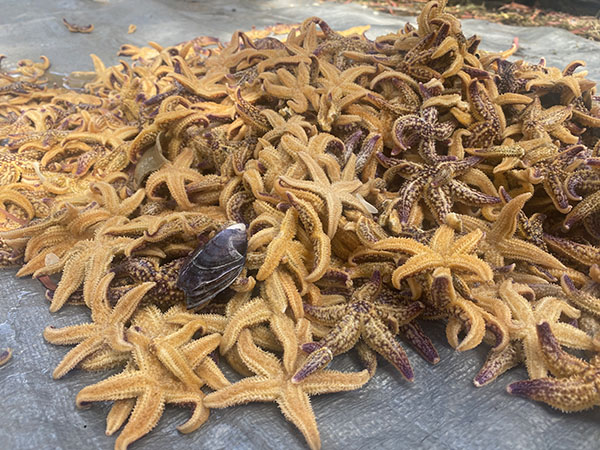Reports of a significant die-off of the Northern Pacific seastar, a highly invasive marine pest, have been confirmed at Carrum in south-eastern Port Phillip Bay.
The increased number of seastars is currently present at Carrum but it has also been reported at Seaford, Frankston, Edithvale and Mount Martha.
Agriculture Victoria Principal Officer Invasive Marine Species, Dr Richard Safford-Bell, said the Northern Pacific seastar was first detected in Port Phillip Bay in 1995, and by 2000 a significant population of the seastar had established.
'It is a widespread and well-established marine pest in Port Phillip Bay and cannot be eradicated. There have been dead seastars reported in the area since February 2024, but numbers have increased significantly over the last few months.
'We would like to highlight the great work of Earthcare St Kilda and the Port Phillip EcoCentre in organising removal events of the Northern Pacific seastar, with over 60,000 removed since February.'
Earthcare St Kilda welcomes volunteers to assist in seastar removal events.
The key features of the Northern Pacific seastar are 5-pointed arms with upturned tips and yellow and purple markings. It is an opportunistic predator that consumes a large variety of prey. In high densities, it can have severe effects on wild and cultured shellfish populations, and on native biodiversity.
Bay users should be aware that marine pests can spread easily to new areas of Victoria through movement of recreational equipment such as boats, kayaks and canoes, and fishing equipment.
Dr Stafford-Bell urged people using marine equipment in the affected area to follow the Check, Clean, Dry method to reduce the risk of spreading marine pests to other marine areas.
'This is particularly important for people moving any equipment used in Port Phillip Bay to other areas,' Dr Stafford-Bell said.
Good marine equipment hygiene means:
- Check any equipment and vessels that have been in marine waters for pests.
- Clean the equipment in freshwater.
- Dry the equipment before moving to a new marine location.
He added that Northern Pacific seastars are not poisonous or dangerous to people or domestic animals and asked that beachgoers finding Northern Pacific seastars washed up on the shoreline not to return them to the water.

Northern Pacific seastars collected by volunteers.






